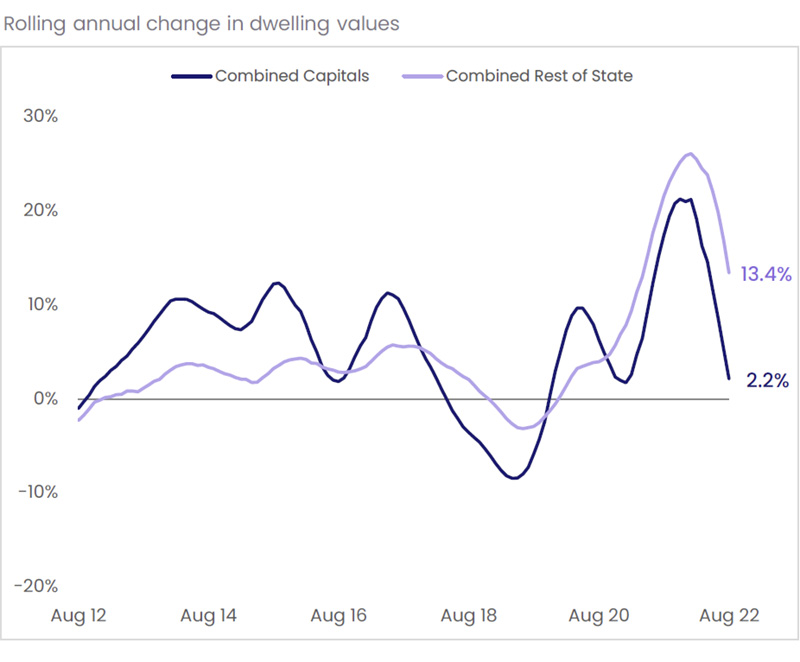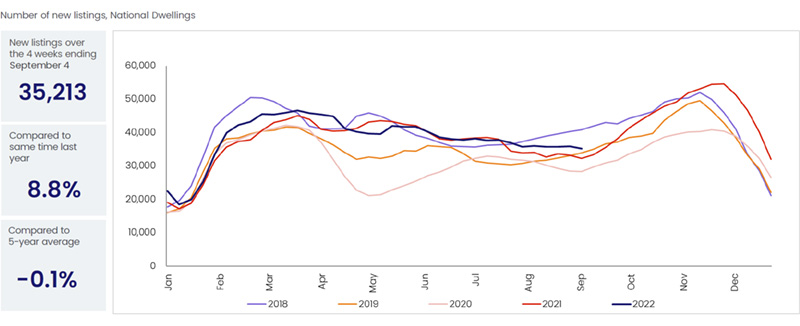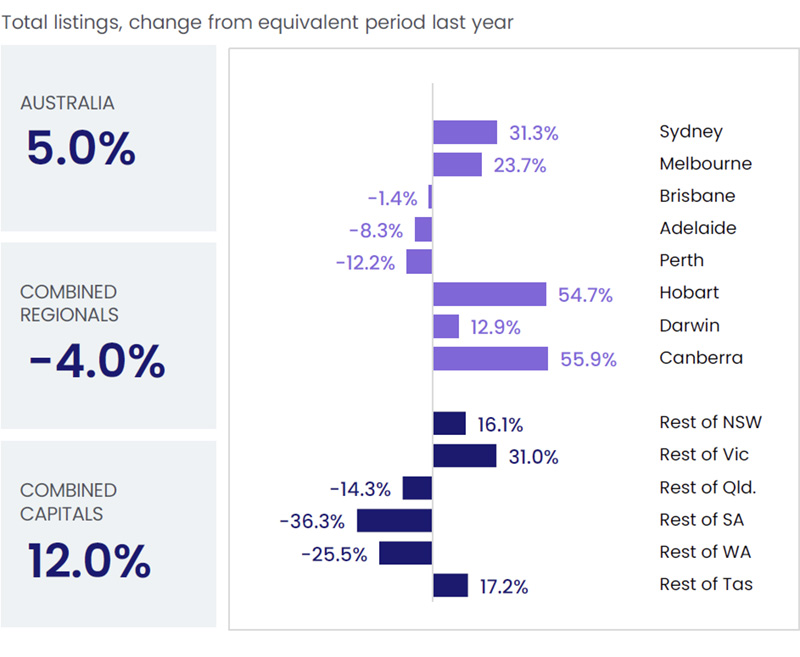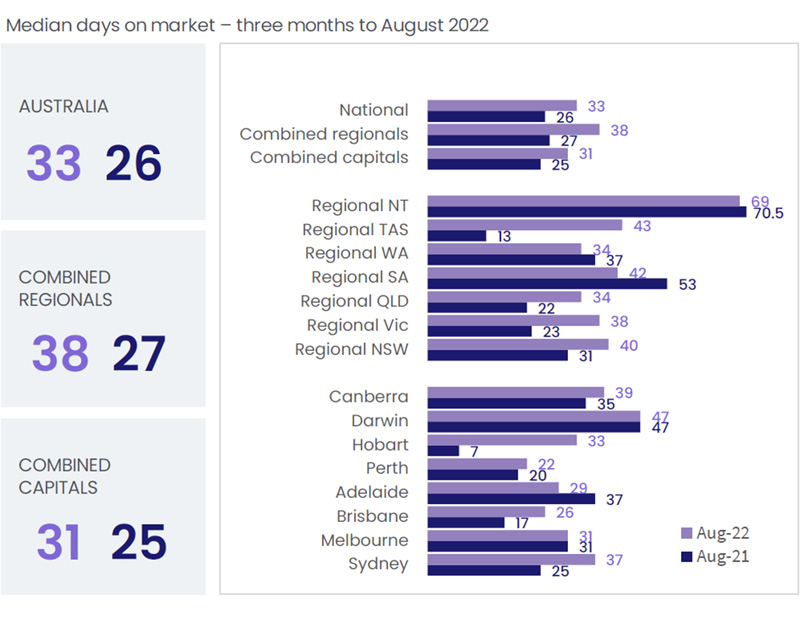The numbers add up to more national property price pressure
Residential real estate underpins the nation’s wealth, valued at $9.7 trillion but is coming under immense pressure, with more spring listings set to apply even greater pressure on real estate prices.
If Australia was a homeowner, it would have paid off almost more than three quarters of its mortgage.
Residential real estate underpins the nation’s wealth, valued at $9.7 trillion and far outweighing the value of superannuation ($3.3 trillion) and listed stocks ($2.7 trillion). Commercial property is worth an additional $1.3 trillion.
The collective outstanding mortgage debt on the country’s 10.8 million dwellings is $2.1 trillion, translating into more than 78 per cent of the debt having been paid off.
Dwelling values in Australia, according to CoreLogic, are 4.7 per cent higher over the past 12 months, down rapidly from a cyclical peak of 22.4 per cent recorded in the 12 months to January 2022. In the past quarter alone they fell 3.4 per cent.
This pace of decline is accelerating, with only Darwin among the capital cities not to experience a fall in values.

Source: CoreLogic Monthly Housing Chart Pack - September 2022.
Listless listings
At the national level, the stock of total listings is gradually rising as properties take longer to sell. However, advertised stock remains well below the average for this time of the year.
Residential listings fell 3.5 per cent to 228,295 and new listings – of homes on the market for fewer than 30 days – slipped 1.9 per cent. This was unusual for August, which typically marked the start of the spring selling season with an increase.

Source: CoreLogic Monthly Housing Chart Pack - September 2022.
SQM Research managing director Louis Christopher told media that, “The interest rate rises are definitely deterring buyers, but sellers are also being deterred from listing.”
AMP Capital’s Chief Economist, Shane Oliver, who is tipping a peak-to-trough house price fall of between 15-20 per cent, said the more listings in spring will add more pressure on real estate prices.
“Increased listings in the spring selling season will likely add to pressure on prices and a surge in fixed rate loan expiries next year risks driving a sharp rise in distressed selling (as up to a quarter of home borrowers roll over into much higher mortgage rates), which will further add to downwards pressure on prices,” he noted.
“Assuming the cash rate tops out around 2.6 per cent early next year then average prices are likely to fall 15-20 per cent top to bottom, of which we have so far seen 3.5 per cent, with the low likely being reached in the second half of next year after interest rates peak and start to fall back.”

Source: CoreLogic Monthly Housing Chart Pack - September 2022.
CoreLogic’s head of research Eliza Owen said there are data points that indicate that a growth in new listings is on its way in the coming weeks.
“The lift in listings is also expected to flow through to the auction market, where the number of properties going under the hammer across the combined capital cities typically lifts from September, and continues rising through to the start of December,” she said.
At the national level, properties are taking longer to sell. In the three months to August, the median days on market was 33, up from a recent low of 20 days over the three months to November.
On top of this, median vendor discounting was at 4 per cent across Australia, higher than in the past three years.

Source: CoreLogic Monthly Housing Chart Pack - September 2022.
Ms Owen said this shows that sellers must open their ears to buyer feedback and be flexible on their price expectations.
“Serious vendors will need to be realistic about their price expectations and ensure they have a quality marketing campaign behind the property in what is likely to be a more competitive selling environment through spring and early summer,” she said.
“This reduction in price is largely a function of rising mortgage rates, where buyers may not be able to afford as much debt as they could a few months ago.”




















